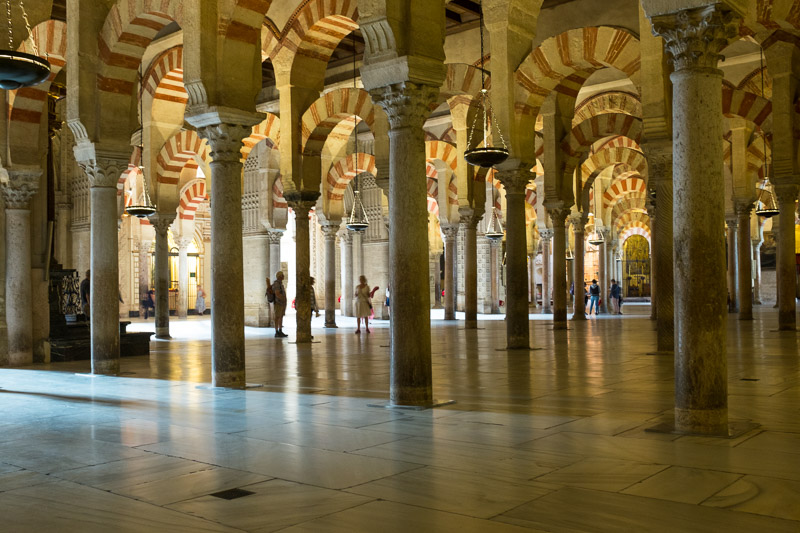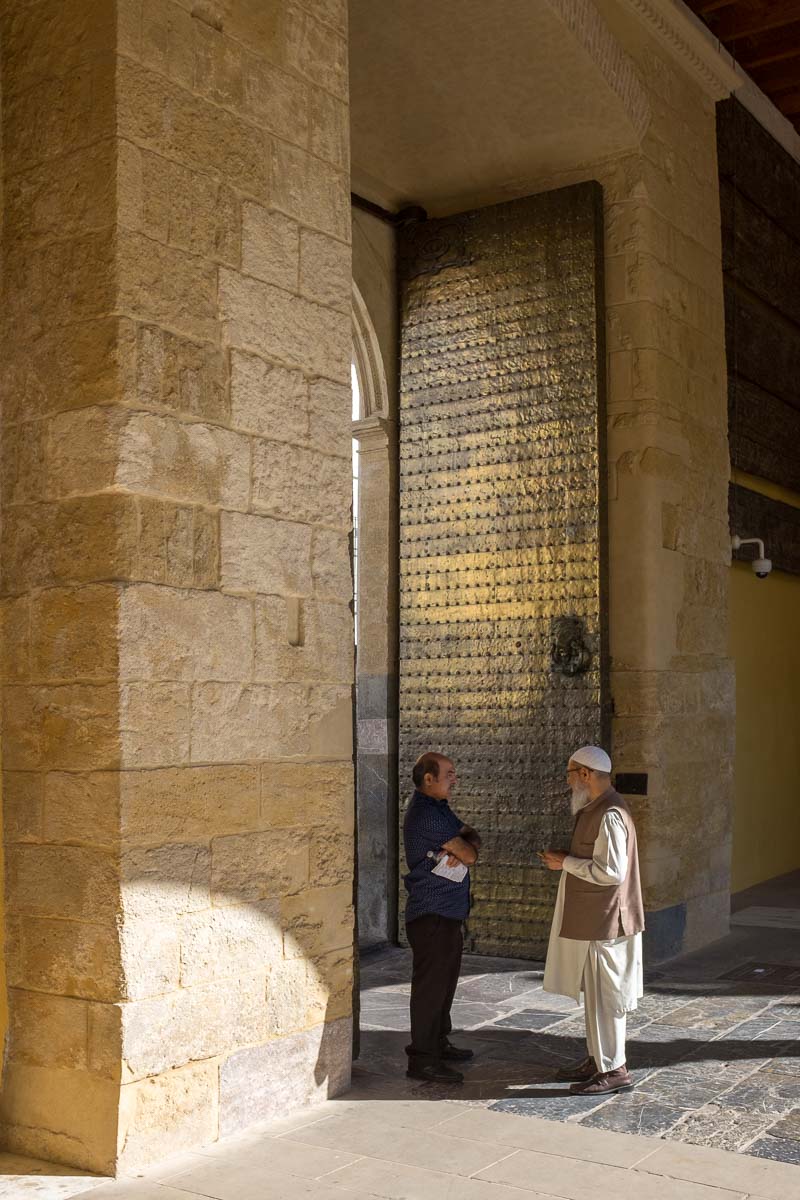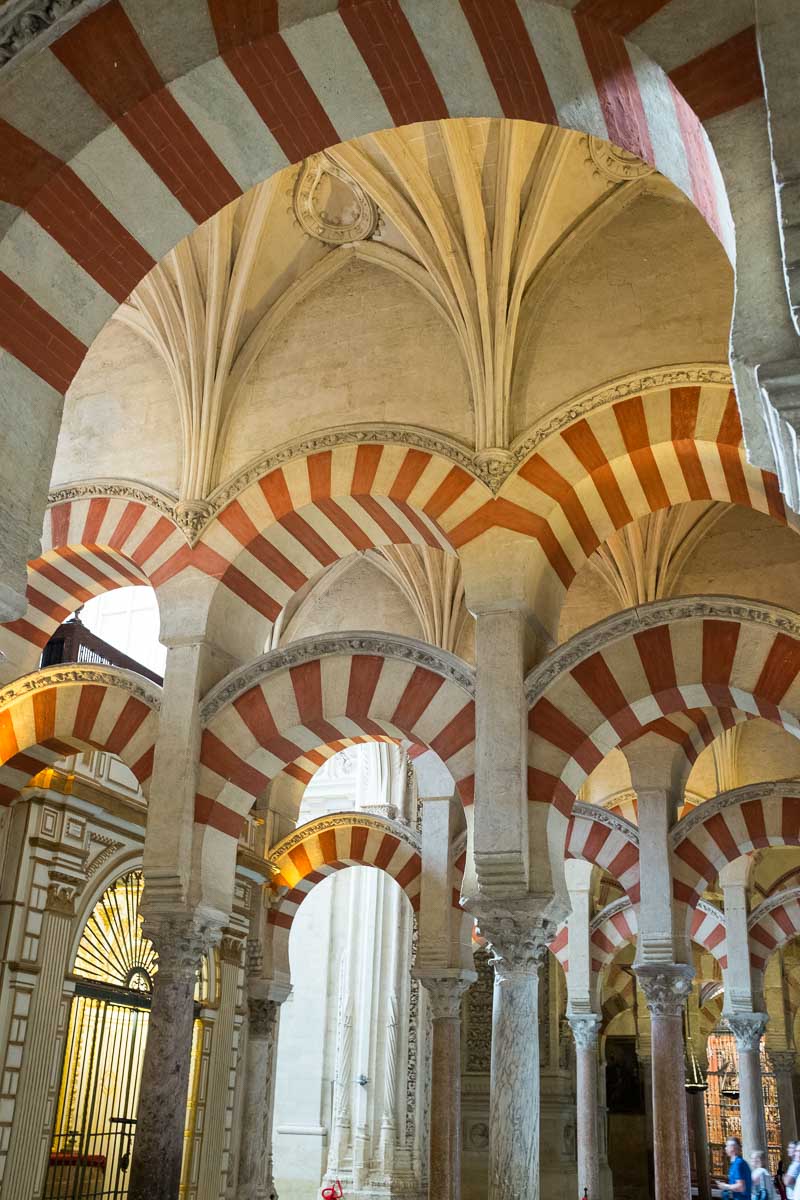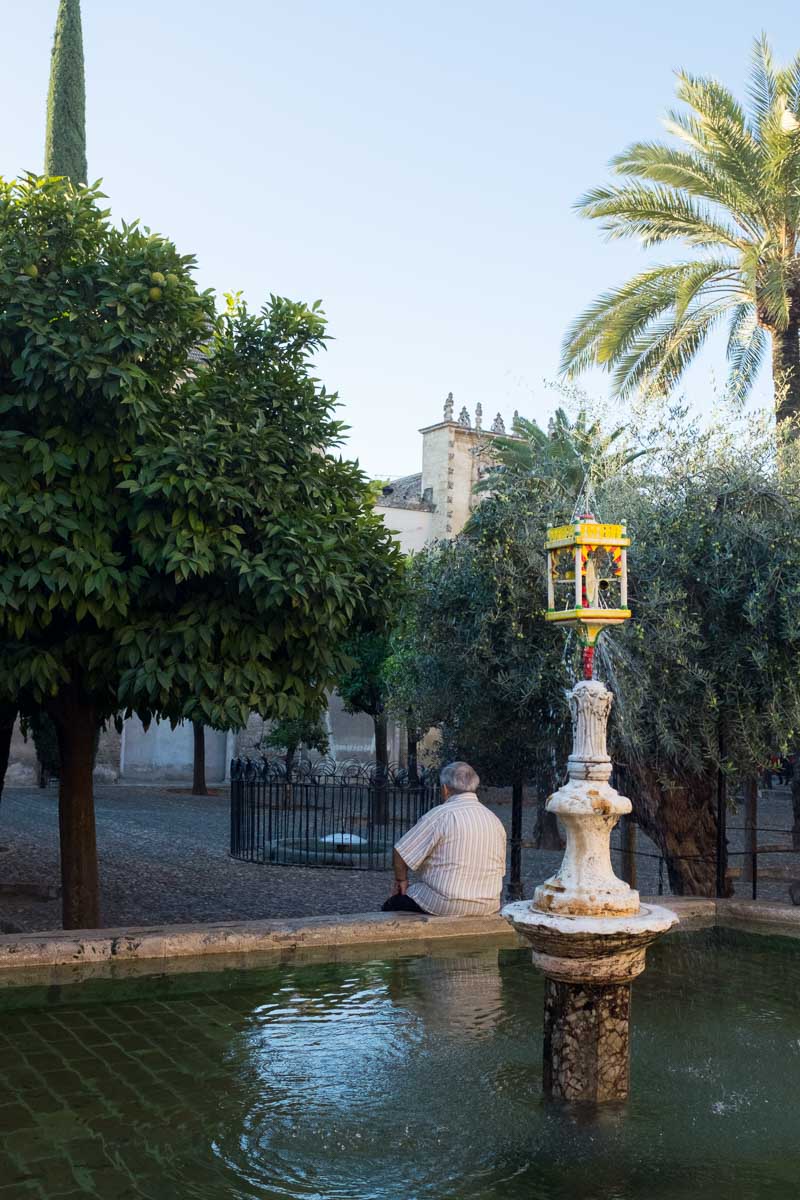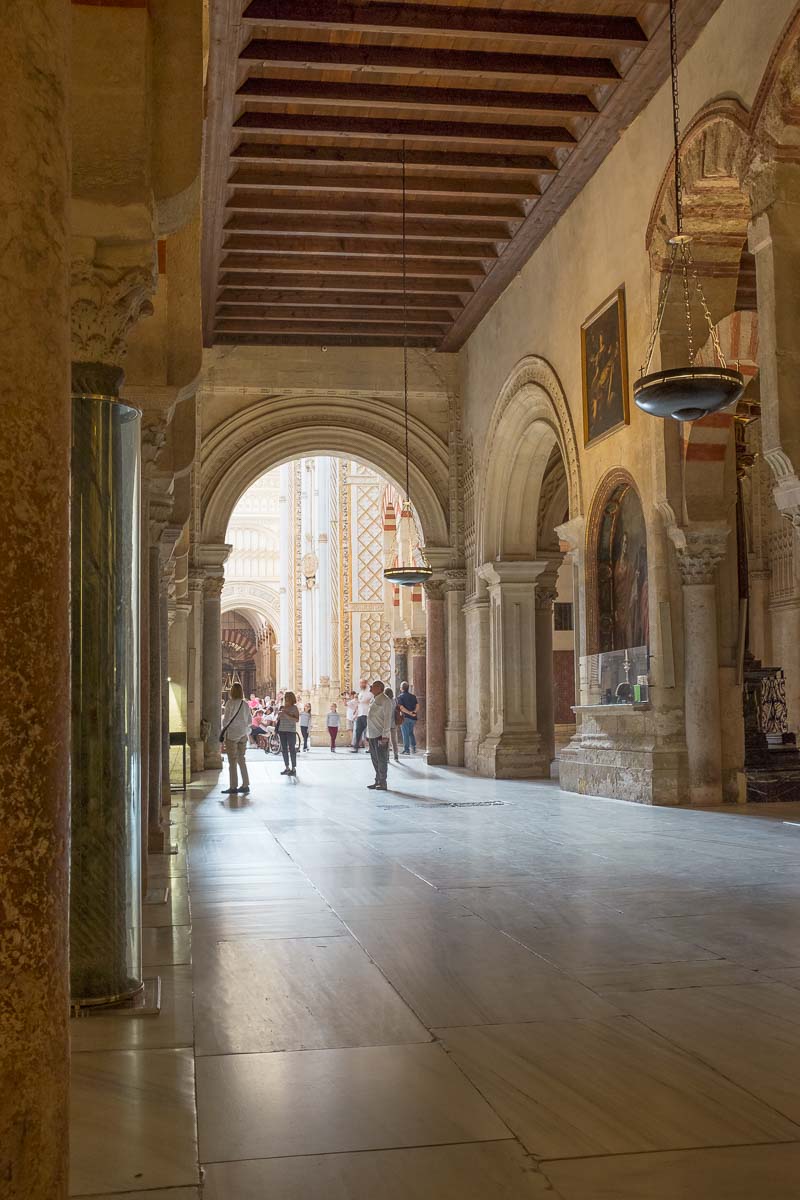
We get the train from Seville to Cordoba and a taxi to the hotel, which is up a narrow whitewashed alley. The taxi driver points out the Roman bridge over the R. Guadalquivir and tells us we have arrived on the Saint’s day of Saint Raphael.
He points out the statue of Saint Raphael that stands on a column many feet tall near the bridge. He tells us that the names Raphael and Raphaela are so popular that it seems that everyone has the name.
Our room is delicate. We laugh at the design, with a bath surrounded by mirrors, and side tables that seem as though they will collapse at our touch.
In the late afternoon we go exploring. While Seville is built on a flat plain near the sea, Cordoba is hilly. Our hotel is just a few streets from the Mesquita – the grand mosque of Córdoba. It seems that all the shops and cafes pay homage to this walled structure in its heart.
For two days we think that this is Cordoba – narrow alleys, the courtyard, the interior of the Mesquita with low arches in contrasting red and cream, supported on eight hundred columns that reach into the distance.
Then in the evening we get directions to a supermarket. Tamara stays at the hotel and I climb the alleys and come out onto modern Cordoba with fine early twentieth-century buildings, plazas, and a whole world different from the old city down the hill.
It is so funny to think what a lopsided view we had of the city.
The next day we walk up together and enjoy the shops and cafes, the space and air. It is a tale of two cities.
Of course, the picturesque is the Mesquita – the grand mosque of Córdoba – and here are more views inside and in the courtyard.
